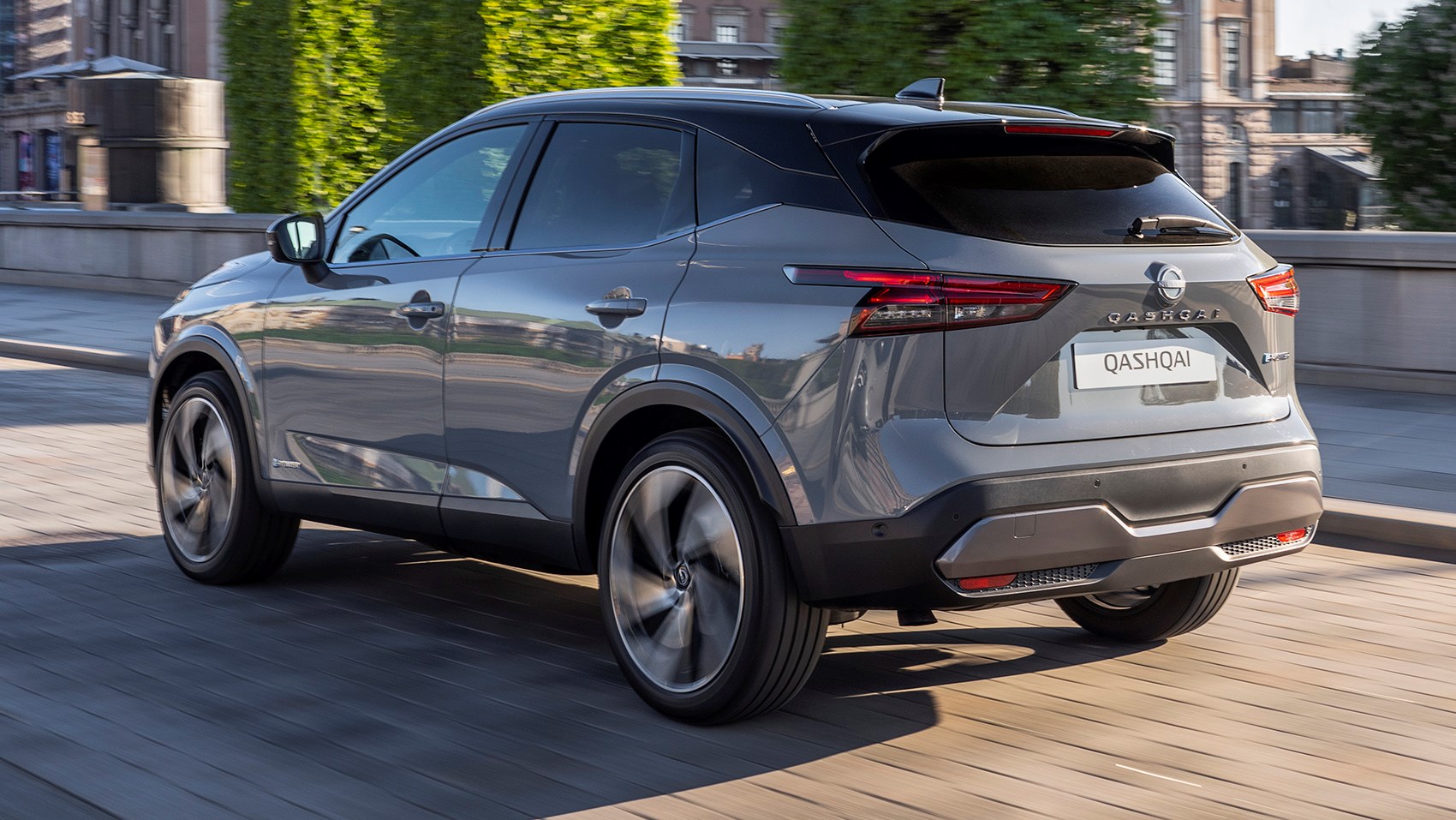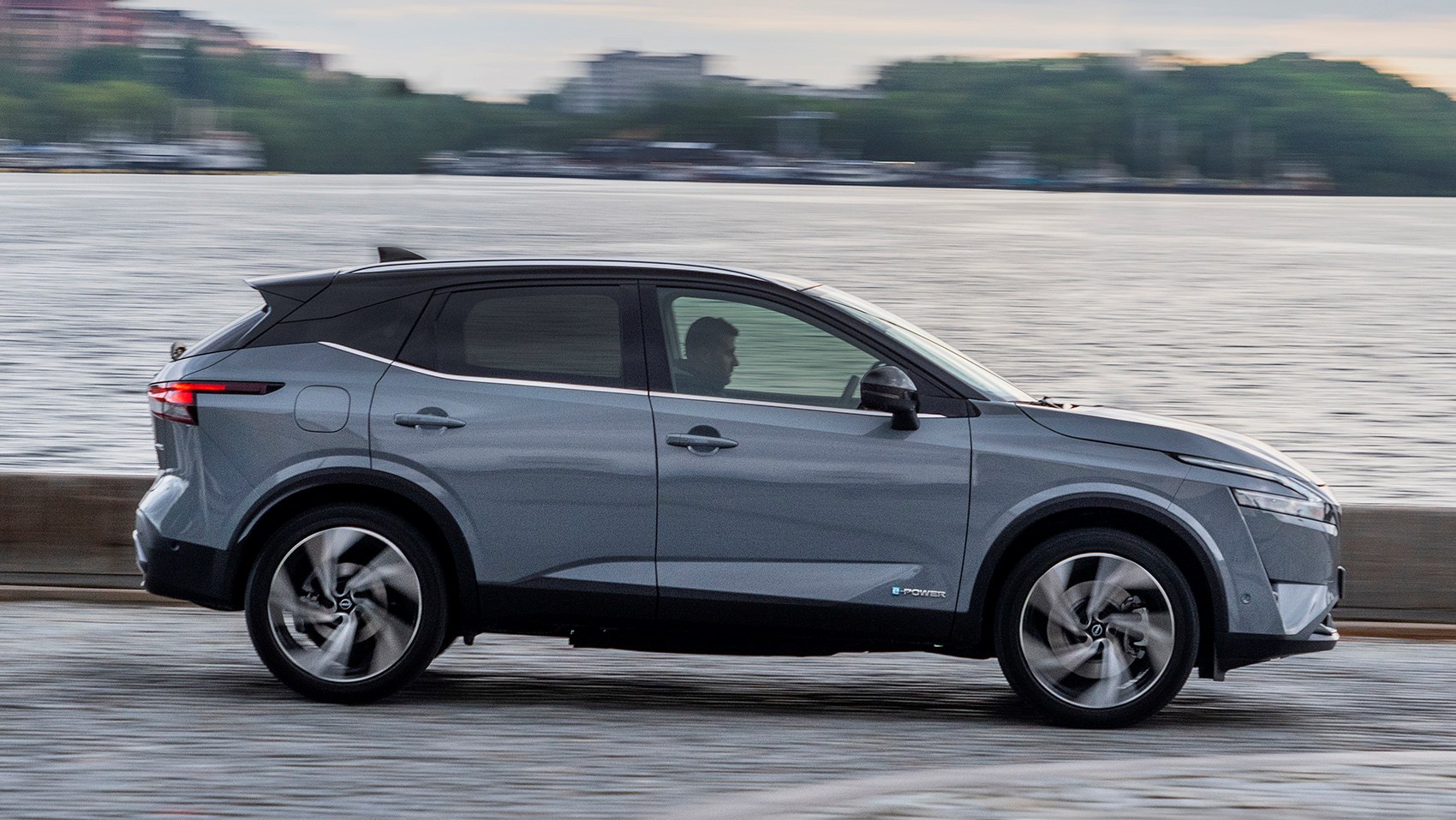► Nissan’s clever e-Power Qashqai tested
► It’s technically a range-extender
► How does it feel to drive?
Pity poor Nissan. The third-generation Qashqai is a massive improvement over what came before – razor-edged styling means it stands out in a market packed with me-too SUVs, while the interior is simple to use, spacious and trimmed in materials that would shame some so-called premium rivals. So, what’s the problem?
What indeed. It was launched with a range of weedy mild-hybrid engines that, although capable enough, didn’t really have sufficient power or efficiency to do the new car justice. Nissan told us to wait for the E-Power variant, claiming it would all change once it was launch. Until this point though, the firm’s had to fight this most competitive market with one arm tied behind its back.
E-Power is here now – and Nissan’s so confident in its abilities, it won’t bother introducing any plug-in hybrid Qashqais at all. Brave.
E-Power – the technical lowdown
According to Nissan, E-Power is unique because the petrol engine has no transmission between it and the wheels. Instead, the 1.5-litre variable compression three-cylinder ICE unit generates electricity which provides power to an inverter, which sends power to a motor that then powers the wheels. This is different to parallel systems found in traditional hybrids such as the Toyota Prius, as in these models the engine still drives the wheels.

Total power output for Europe is 187bhp, which puts it up against some interesting rivals and, more importantly, finally gives the keen-handling Qashqai the power it deserves. You can tell the E-Power models apart from the mild-hybrid Qashqais by their new black grille, E-Power badges and widescreen 12.3-inch infotainment screen. It also features Nissan’s E-Pedal, which dials up the regenerative braking allowing drivers to use just one pedal in urban areas.
Is the powertrain any good?
Well, it’s certainly smooth. Nissan’s VP for product in Europe, Arnaud Charpentier said: ‘e-Power is ready for people who aren’t ready to jump to a full EV. ‘It’s bringing people electric power but without the inconvenience. Plugging in is in the top-three blockers to people going full EV.’ In that aim, he’s not wrong, although we’re not convinced it’s a perfect emulation of the EV drive for those still wedded to pouring petrol into their cars. But as a gentle gateway without the need of going to a full plug-in hybrid, it’s good enough.
What the E-Power delivers very successfully is the smooth, silent experience you get from an EV. Driving in town is where it’s most impressive, with battery assistance off the line and an engine (combined with anti-noise system) that’s difficult to detect when cutting in. In that aim, it’s succeeded in making a quiet city car – Nissan reckons it’ll do about 1-2 miles on pure EV, but we were unable to match this.

Flick it into EV mode to override the engine and all-too frequently, it’ll tell you there’s not enough juice, or you’re demanding too much from it to stick to EV only. However, if you’re gentle with the accelerator, it’ll glide around the city for a little while. Nissan claims 52.3-53.3mpg, but we were unable to check how far off it was on our route that encompassed city and country driving.
What’s it like to drive?
Beyond the impressive city smoothness, it’s a capable all-rounder. Acceleration is tardy off the line unless you’re brutal with the accelerator, in which case the engine cuts in gruffly, and it picks up its skirts for a 0-62mph time of 7.9 seconds. In a world of 300bhp-plus plug-in hybrids, that’s not exactly quick, but in reality, it’s more than enough acceleration for most drivers, and certainly up with the high-power diesel they might be trading out of.
There isn’t a huge difference in the Drive Modes (Eco, Normal, Sport), leaving most drivers to stick it in Eco to make then feel better about themselves. The e-Power is some 200kg more than the regular Qashqai, but the good news is that it steers and handles just as well as the standard model – which was already one of the better-driving C-sector SUVs. It has an impressive ability to flow through bends, with the steering weighing-up very pleasantly, offering decent levels of accuracy and response.

Unlike other hybrids we’d care to mention, the ICE part of the drivetrain is unobtrusive most of the time, delivering linear response and not resorting to revving furiously or ‘mooing’ when you need to accelerate or hit a steep incline. However, it’s here where it doesn’t quite stack up as an EV alternative – you don’t get the addictive kick in the back off the line that EVs are so successful in delivering. Nissan says drivers don’t necessarily want that, but feedback from EV owners begs to differ…
Any changes in space inside?
Practicality is pretty much the same as a regular Qashqai. There’s plenty of room up front with door bins large enough for litre-bottles. Rear occupants also have loads of room.

The rear doors open impressively wide too, which is perfect for fitting child’s seats in. We like the fact that boot space (504 litres or about four golf bags) is the same as the non-hybrid despite the addition of a battery pack. And the tiered luggage boards that allow you to change the depth of the boot remain.
Nissan Qashqai E-Power hybrid: Verdict
The E-Power hybrid system is an excellent bit of kit. It’s almost seamless, quiet and punchy enough once you’re on the move. Undoubtedly, Nissan’s over-egging the pudding by saying it offers EV driving from a petrol car. In truth, it’s an excellent hybrid model and one that delivers power and drivability without some of the compromises you’ll find elsewhere
The proof in this pudding will be how economical it is in the real-world. Will it be economical enough to satisfy those existing Qashqai owners used to the range and parsimony of a diesel engine? They’ll love the refinement and peace, but if it doesn’t pull more than 50mpg out of the hat easily, it might leave them unimpressed.
However, as it stands, it now feels that the Qashqai has the drivetrain it always deserved – and Nissan can once again look at selling a model range worthy of its position as the best-selling family SUV in the UK.